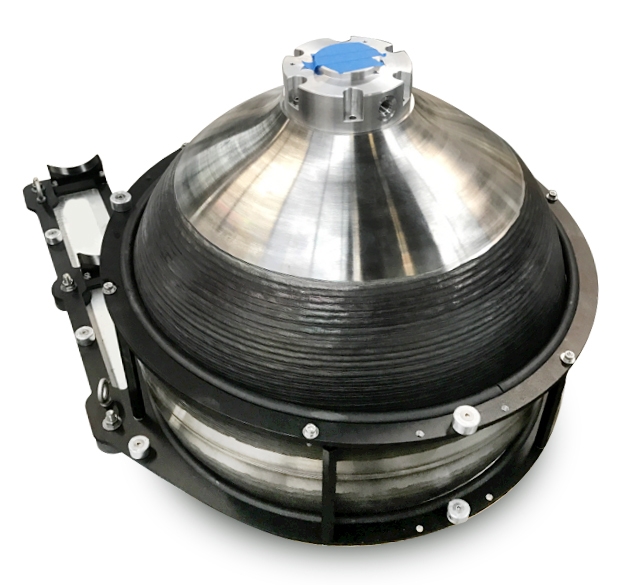
Sciaky 3D printing technology helps submarine manufacturer save time, costs
March 26, 2017
By Sciaky

Mar. 26, 2017 – Sciaky, a subsidiary of Phillips Service Industries (PSI), and provider of metal 3D printing solutions, has announced that its Electron Beam Additive Manufacturing (EBAM) technology helped International Submarine Engineering (ISE) cut significant time and cost from the production of a titanium Variable Ballast (VB) tank versus the traditional manufacturing process.
ISE approached Sciaky after the closure of its former supplier, an overseas titanium forging facility that produced propellant tanks for the Russian space program. ISE did not want to risk further delays in its exploration plans, so it reached out to Sciaky, after learning that Sciaky had 3D printed titanium propellant tanks for Lockheed Martin Space Systems in 2015.
The engineers and project management team at Sciaky immediately put together an aggressive plan to produce a new titanium VB tank for ISE using Sciaky’s EBAM 3D printing process. In the end, Sciaky helped ISE reduce production time from 16 weeks to 8 weeks, as well as reduce overall costs as compared to retooling with a new forging supplier. In addition, the VB tank created with Sciaky’s EBAM process passed the same vigorous qualification testing as the tank previously created with the forging process. ISE now plans to 3D print other critical titanium parts with Sciaky’s EBAM process.
The titanium VB tank is a sub-system of ISE’s Arctic Explorer Autonomous Underwater Vehicle (AUV) class of vehicles. ISE previously built two Arctic Explorers for Natural Resources Canada/Defence Research and Development Canada (DRDC) to map the sea floor underneath the Arctic ice shelf in support of Canada’s claim under Article 76 of the United Nations Convention on the Law of the Sea. The Arctic Explorer is the largest of the Explorer AUV class, measuring over seven meters (nearly 23 feet) long and weighing more than 2,000 kilograms (4409 pounds). It can be launched from a ship or through an ice-hole and the modular sections can be separated for transportation. Its unique VB system enables it to park on the sea floor or hold itself on the underside of the ice during missions. Rated to 5,000 meters (roughly 3.11 miles) depth, the Arctic Explorer is designed to remain underwater between missions for extended periods of time. A small Remotely Operated Vehicle (ROV) conducts all servicing and charging after the AUV is attached to a docking head.
The VB tank 3D printed with Sciaky’s EBAM process will be installed onboard a new Arctic Explorer AUV that is scheduled to be delivered to the University of Tasmania in the spring of 2017. This new Explorer AUV will be deployed in Antarctica after extensive trials and training operations.
“Sciaky is proud to help ISE cut production time by 50 per cent and reduce costs by 3D printing [its] titanium VB tank with our one-of-a-kind EBAM process,” said Bob Phillips, vice-president of marketing for Sciaky. “Our industry-leading EBAM technology is the world’s only industrial-scale metal 3D printing solution with approved parts for land, sea, air, and space applications.”
Sciaky’s lineup of EBAM systems can produce parts ranging from 8 inches (203 mm) to 19 feet (5.79 meters) in length. EBAM is also the fastest deposition process in the metal additive manufacturing market, with gross deposition rates ranging from seven to 20 lbs. (3.18 to 9.07 kg) of metal per hour, adds the company.
Advertisement
- Five benefits of wireless vs. wired remote monitoring systems
- Accelerating fuel-efficient car production with 3D printing